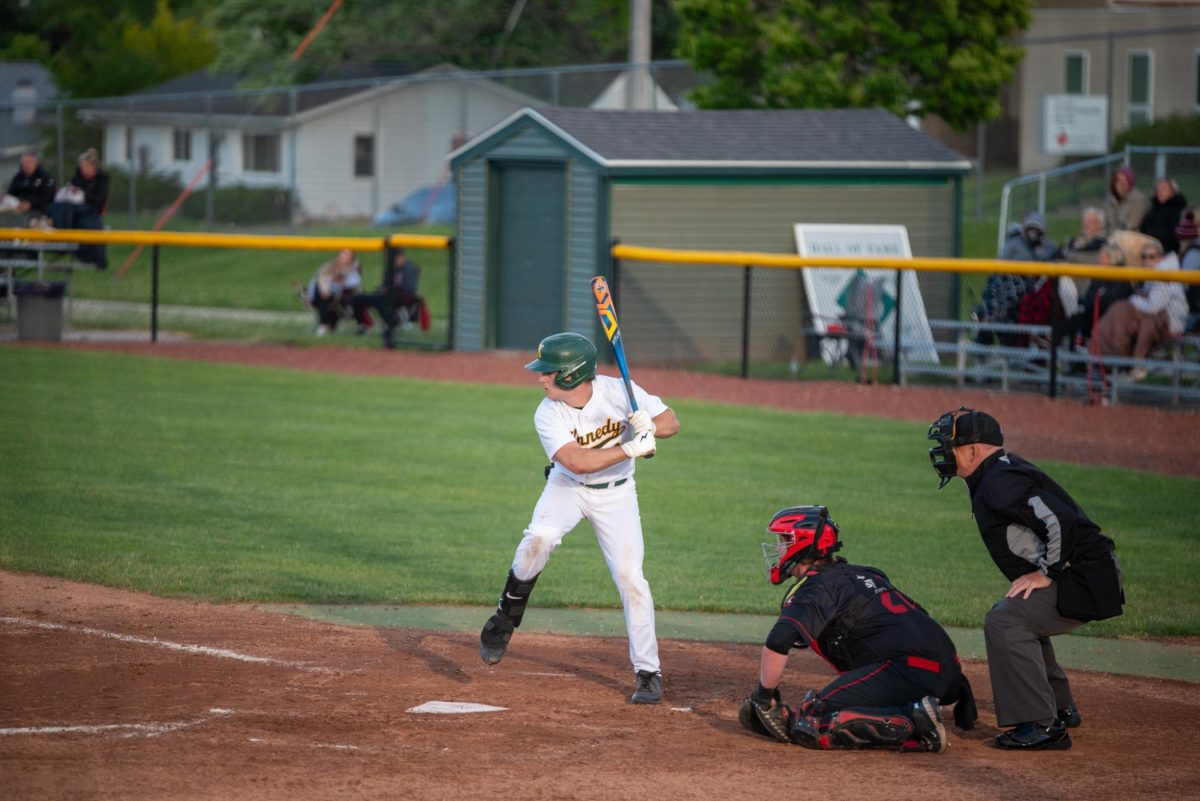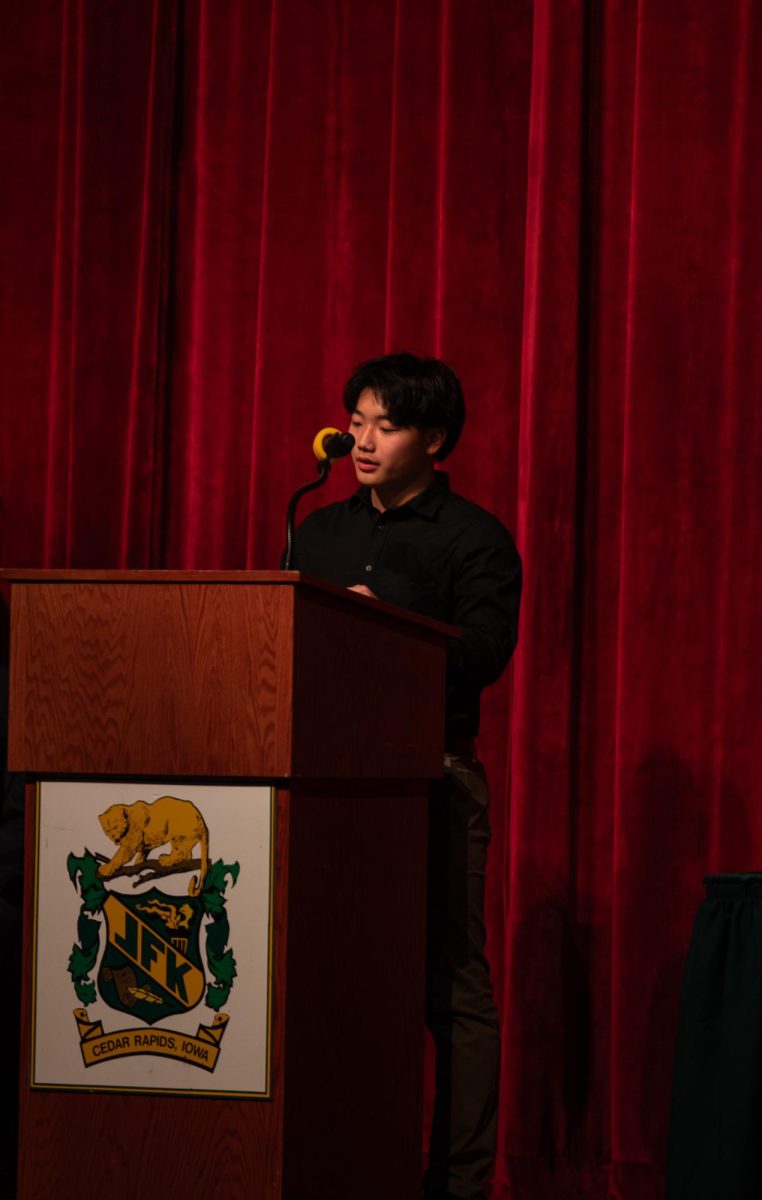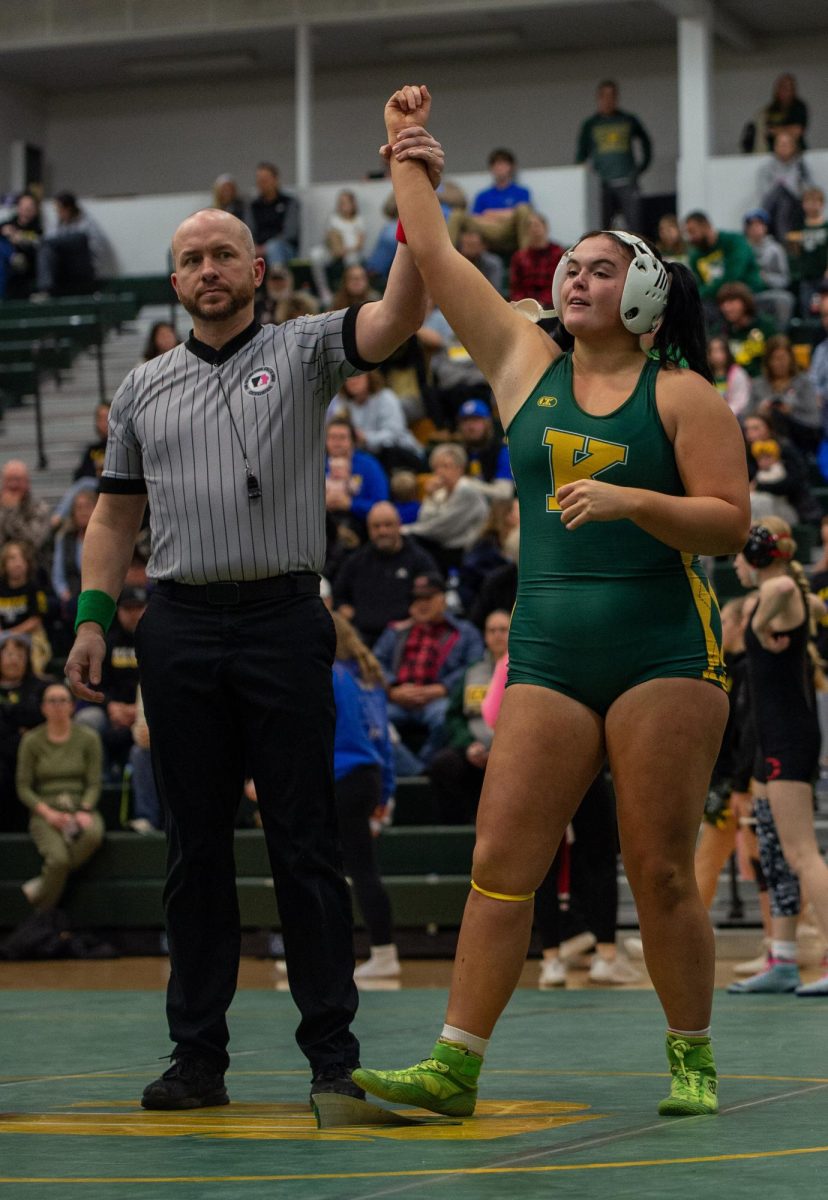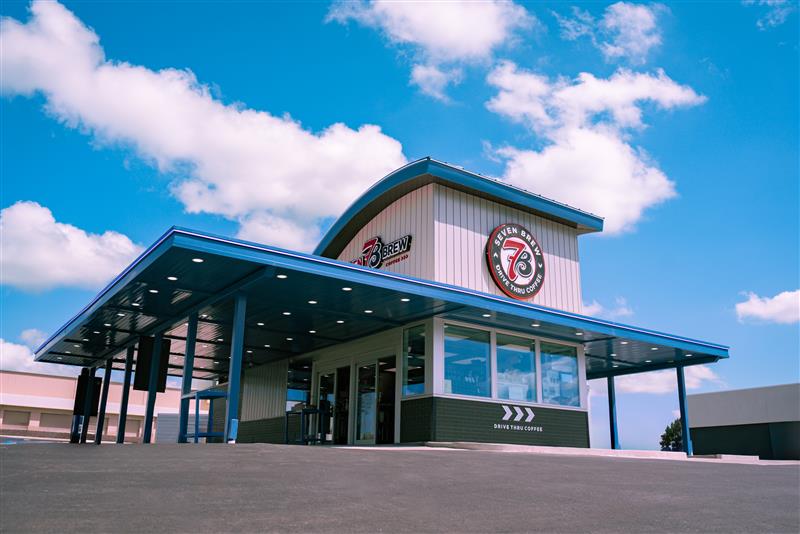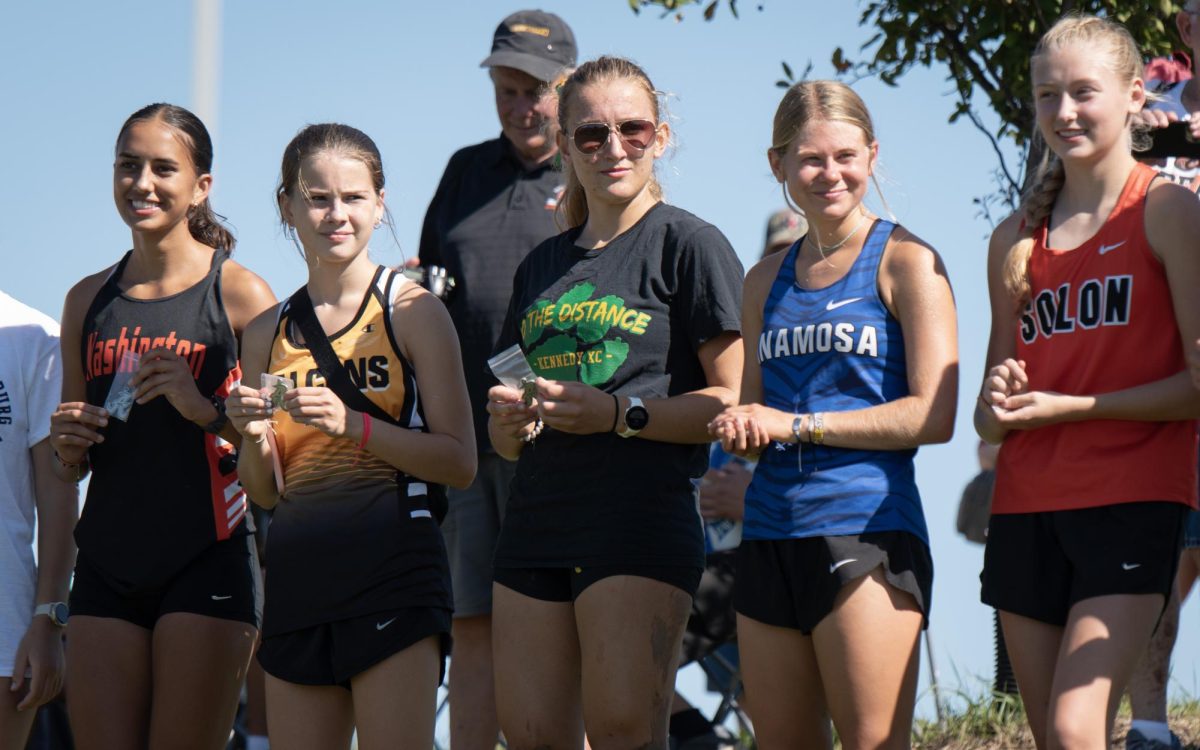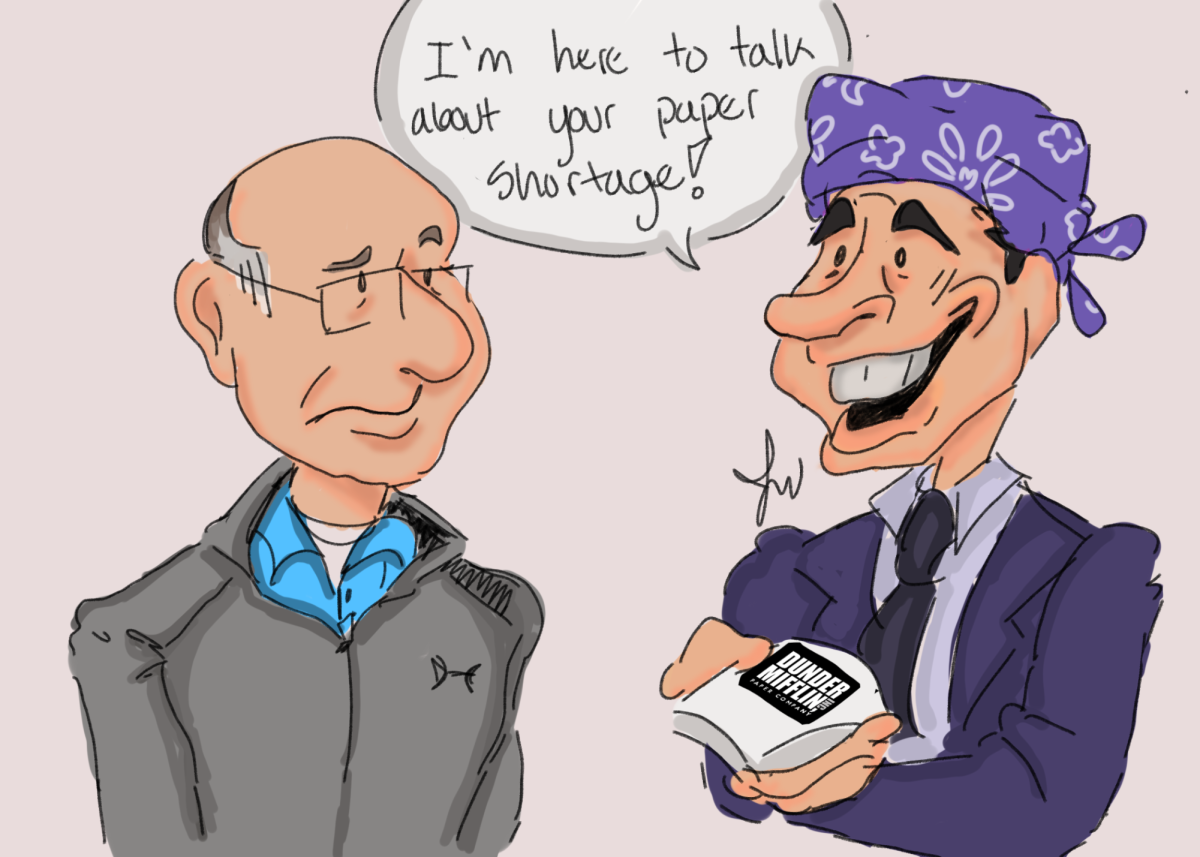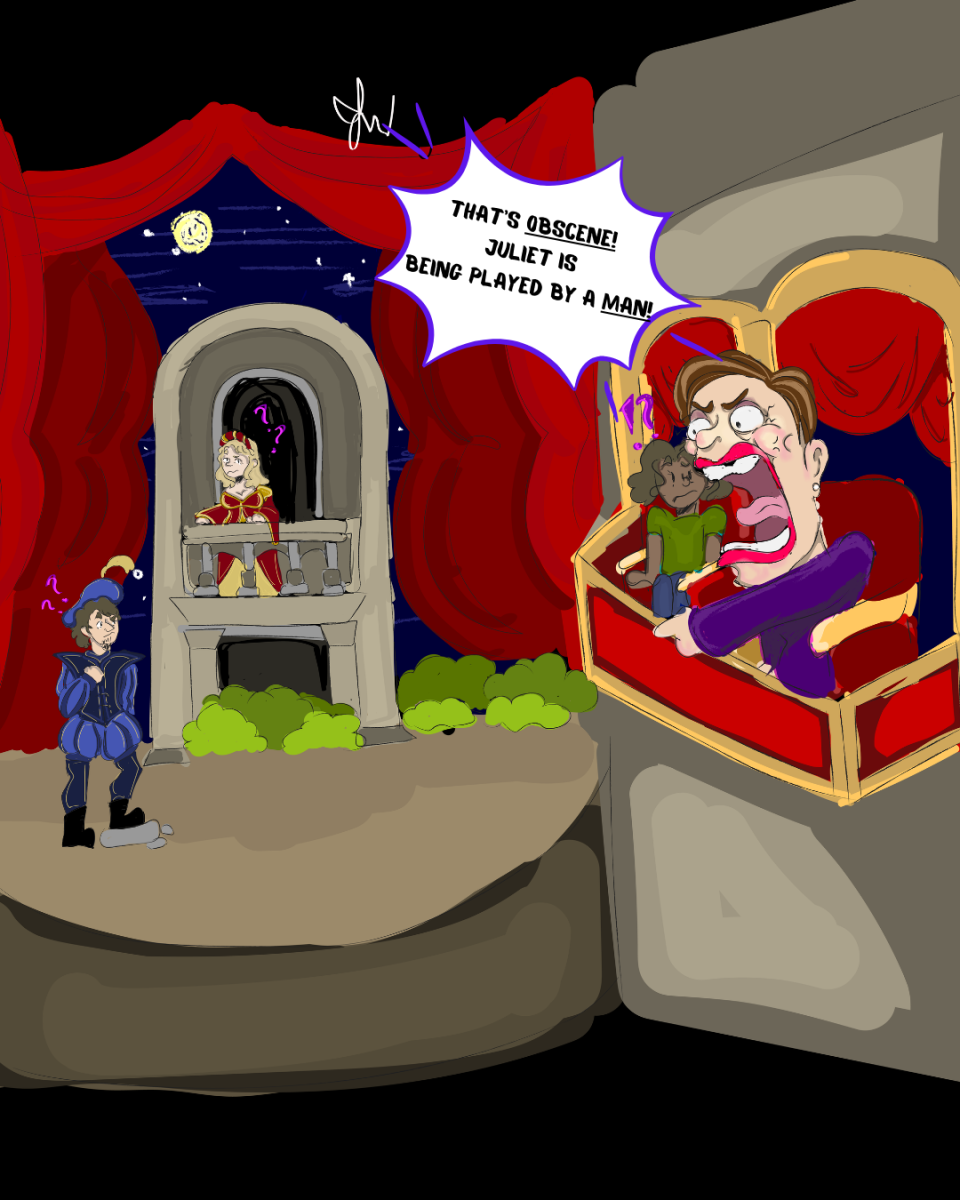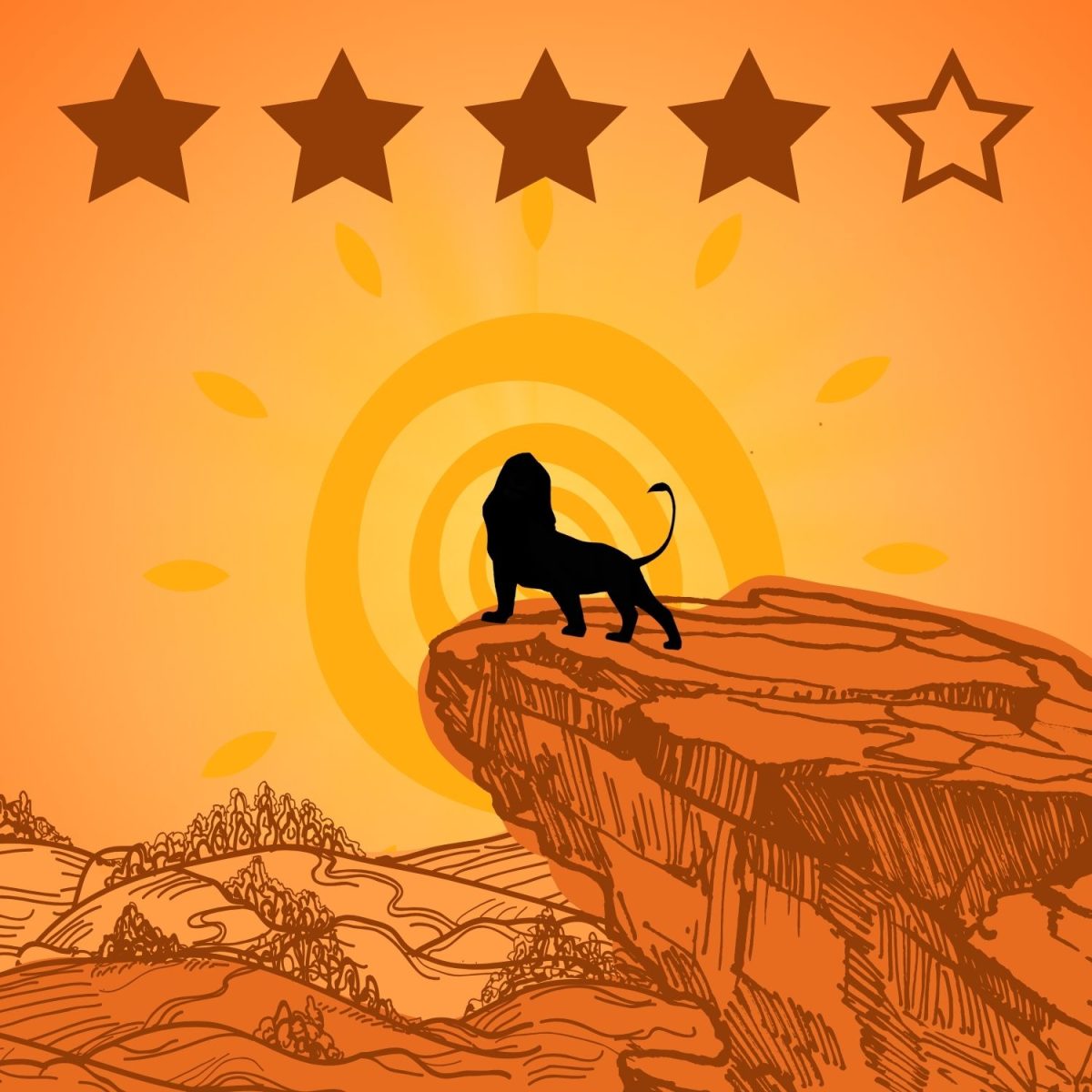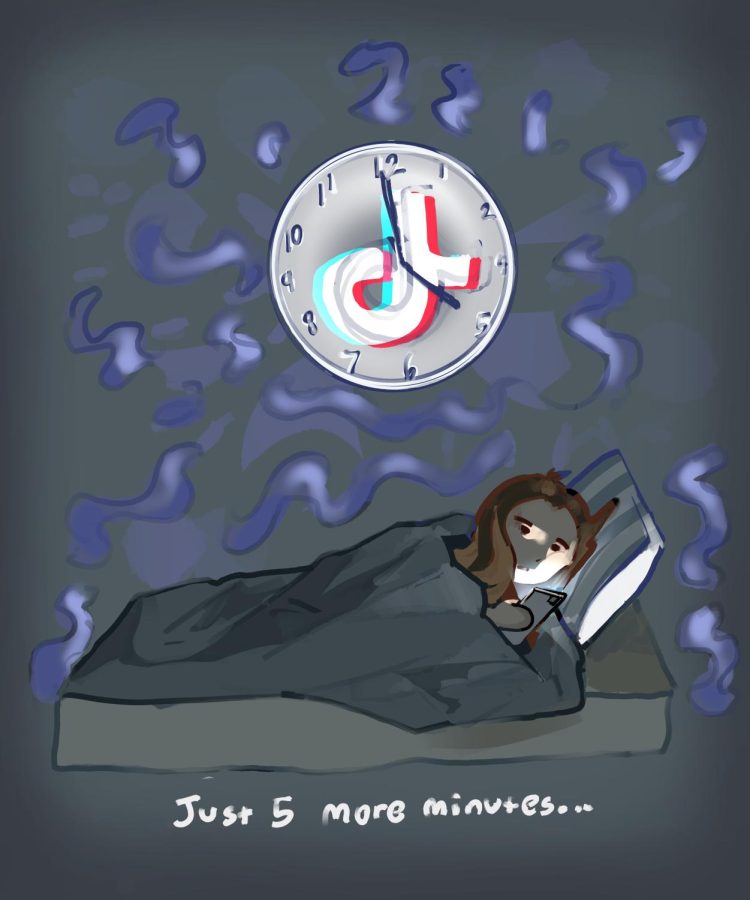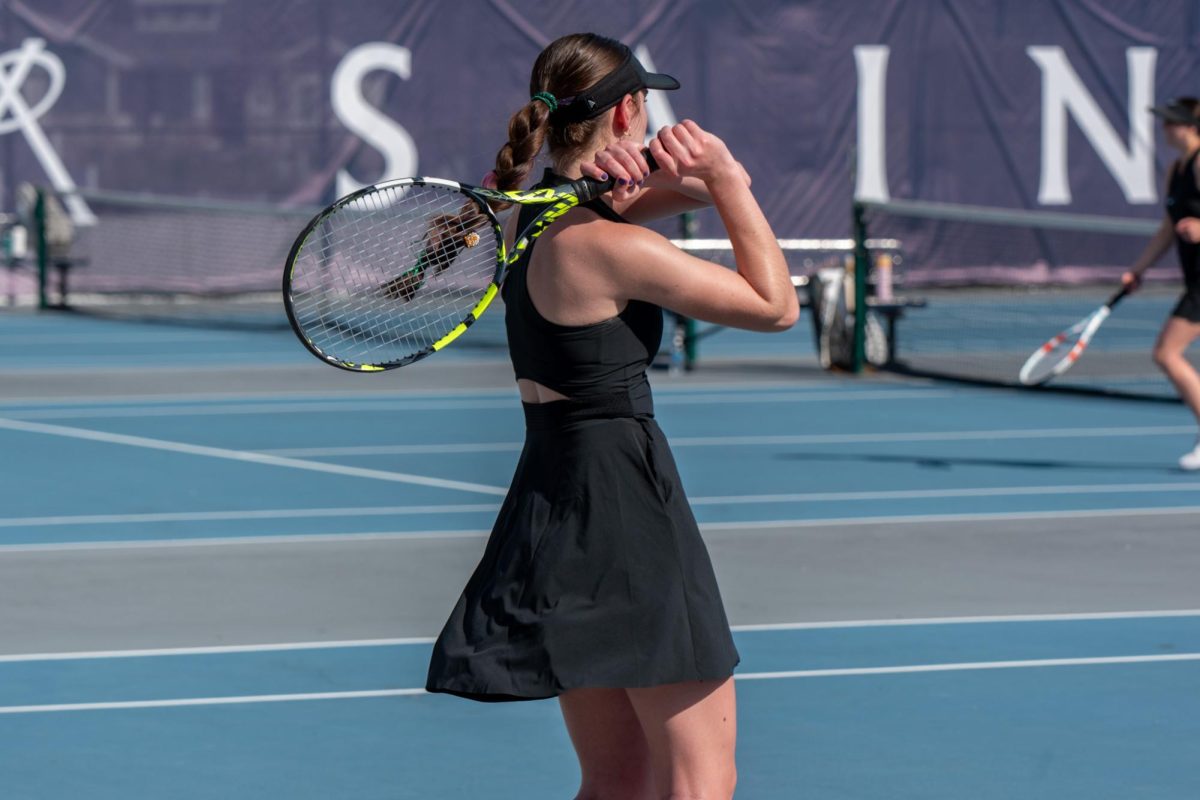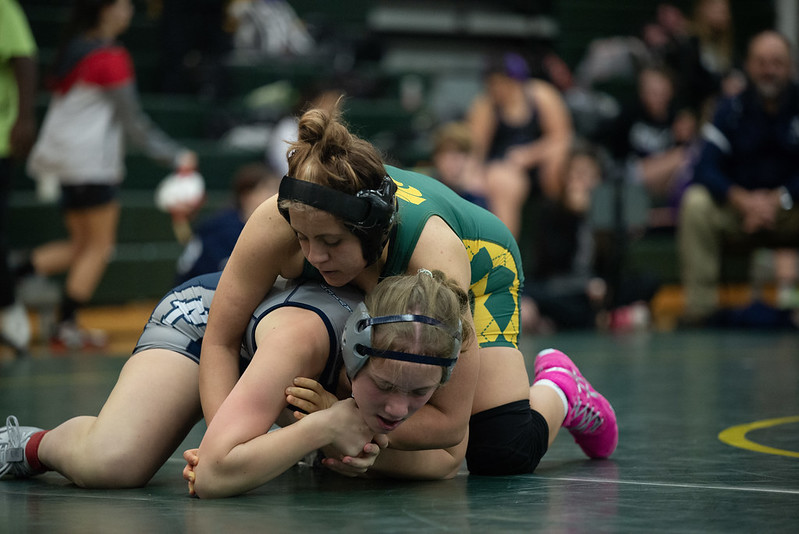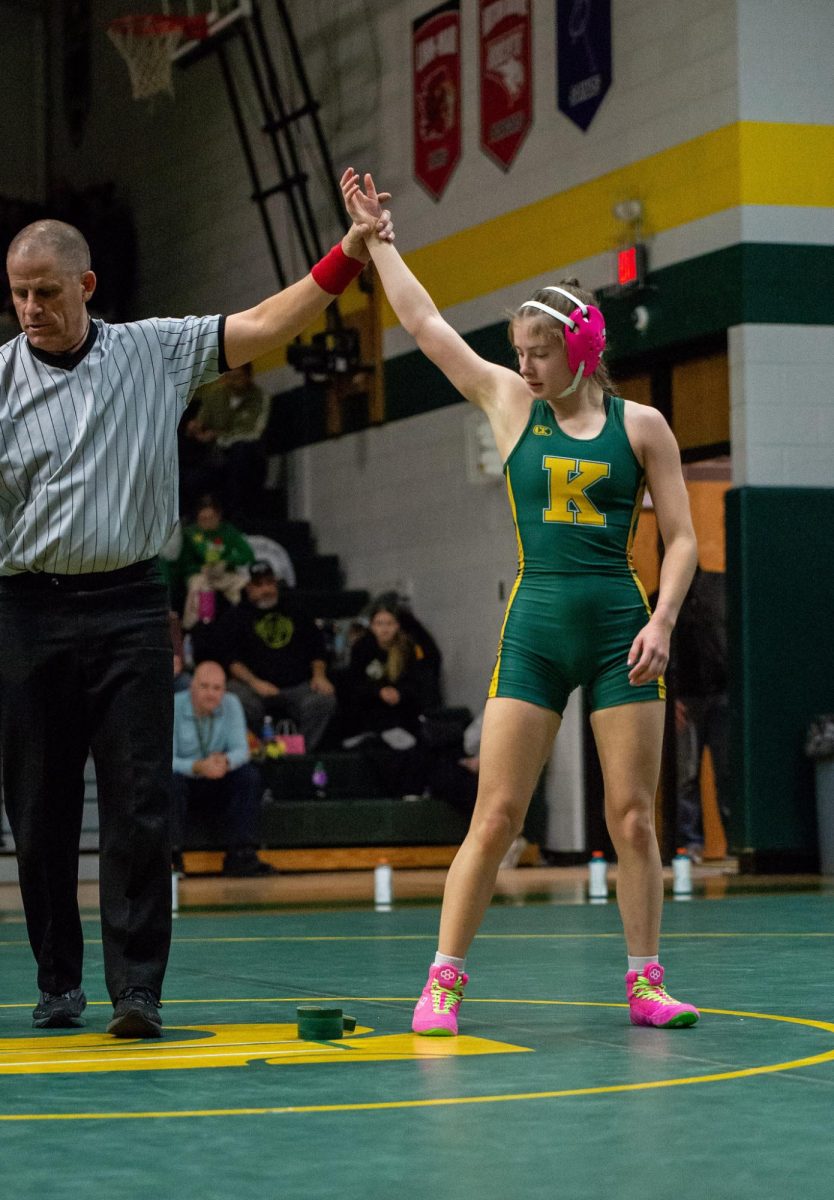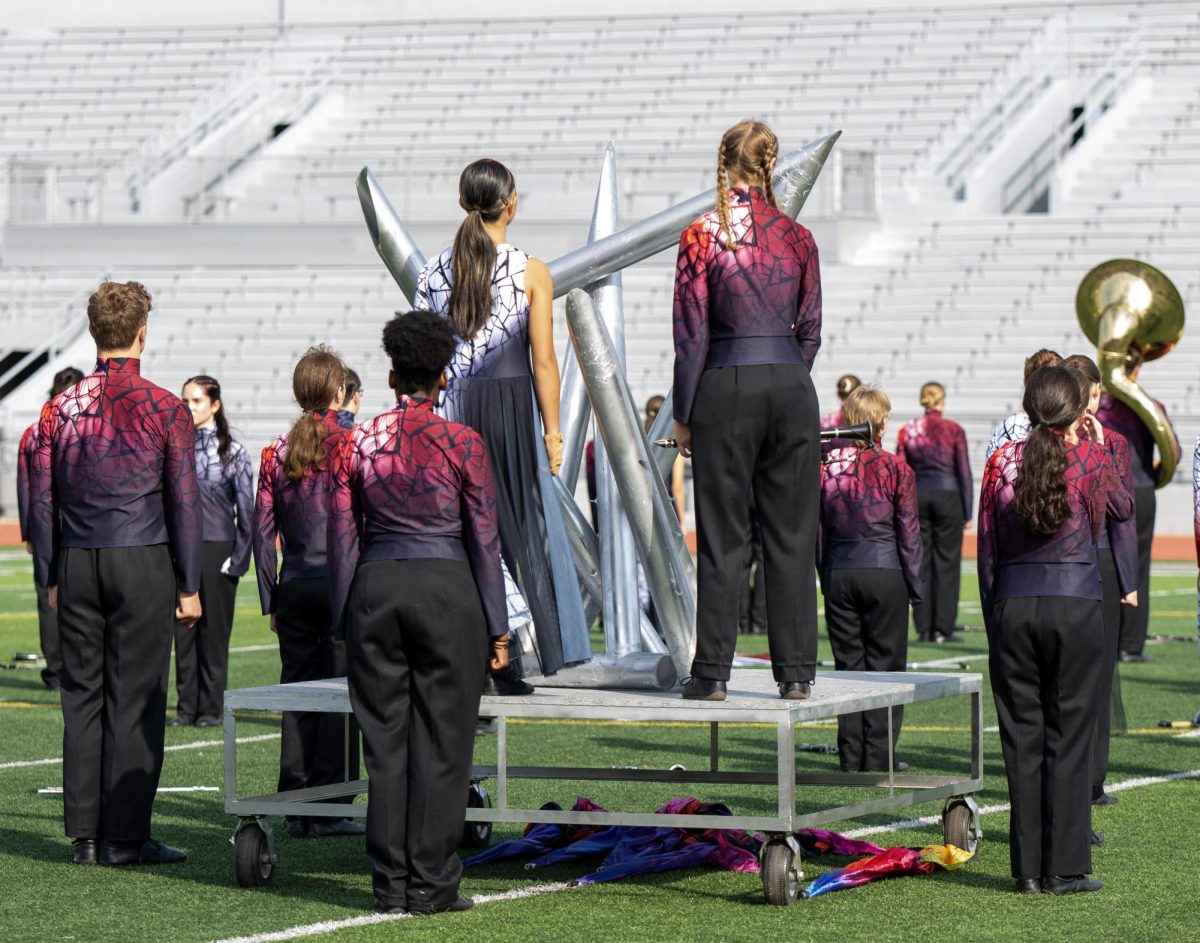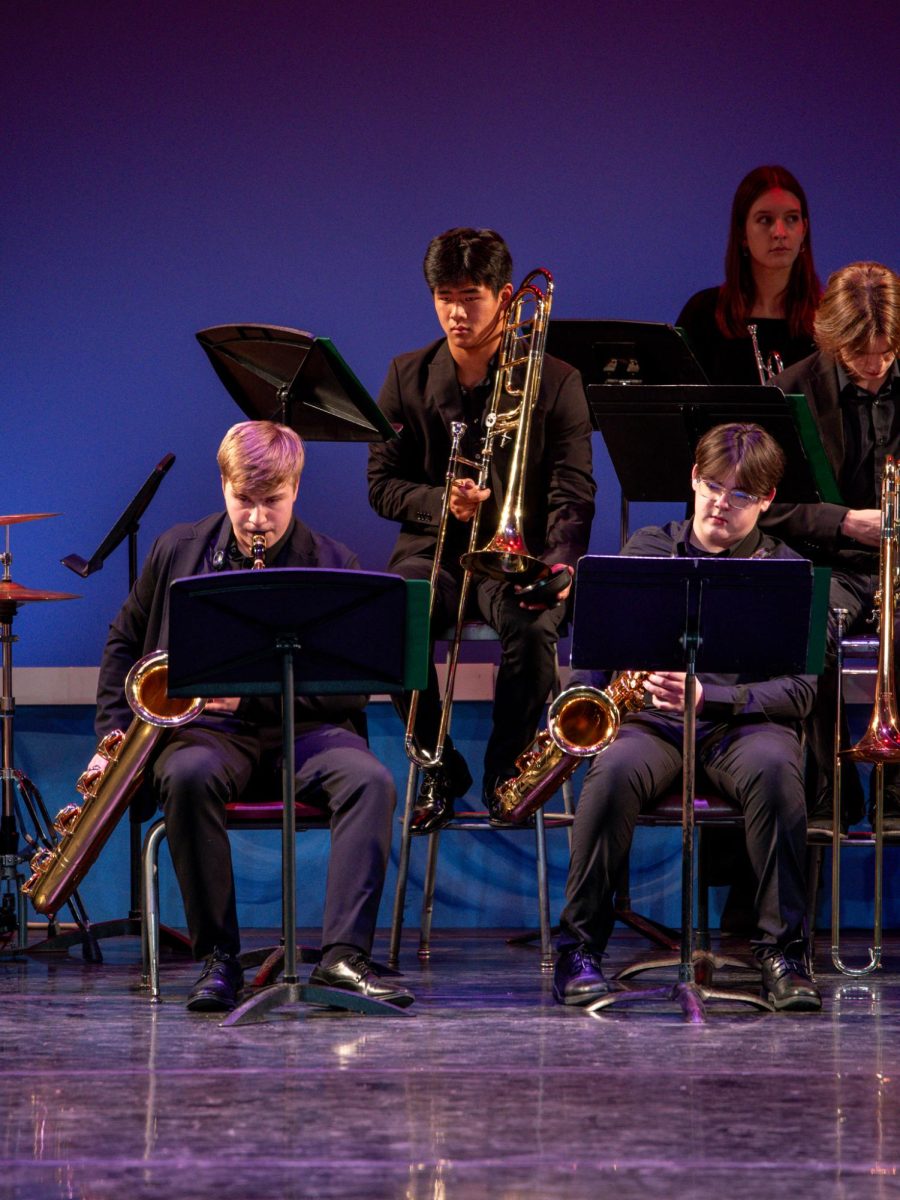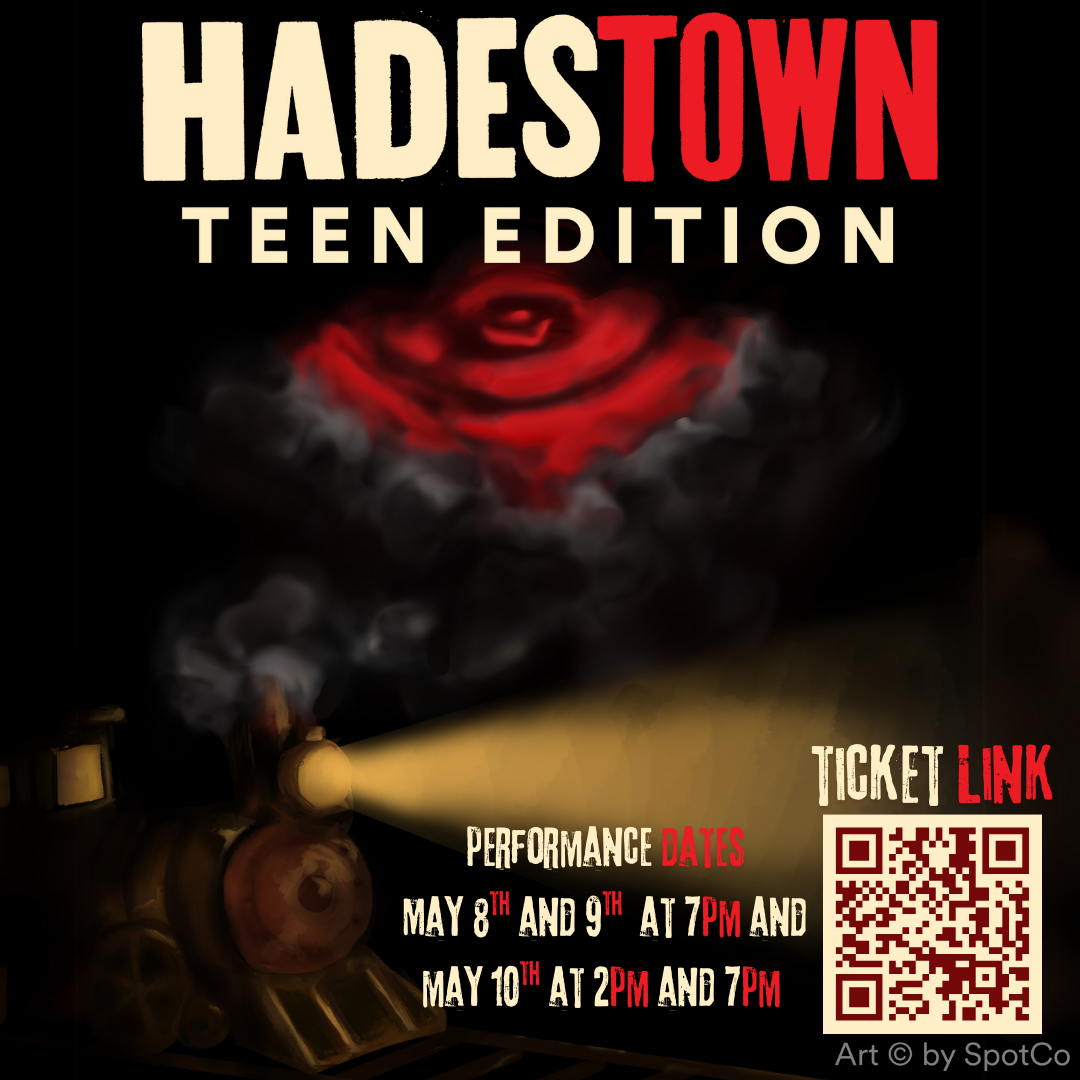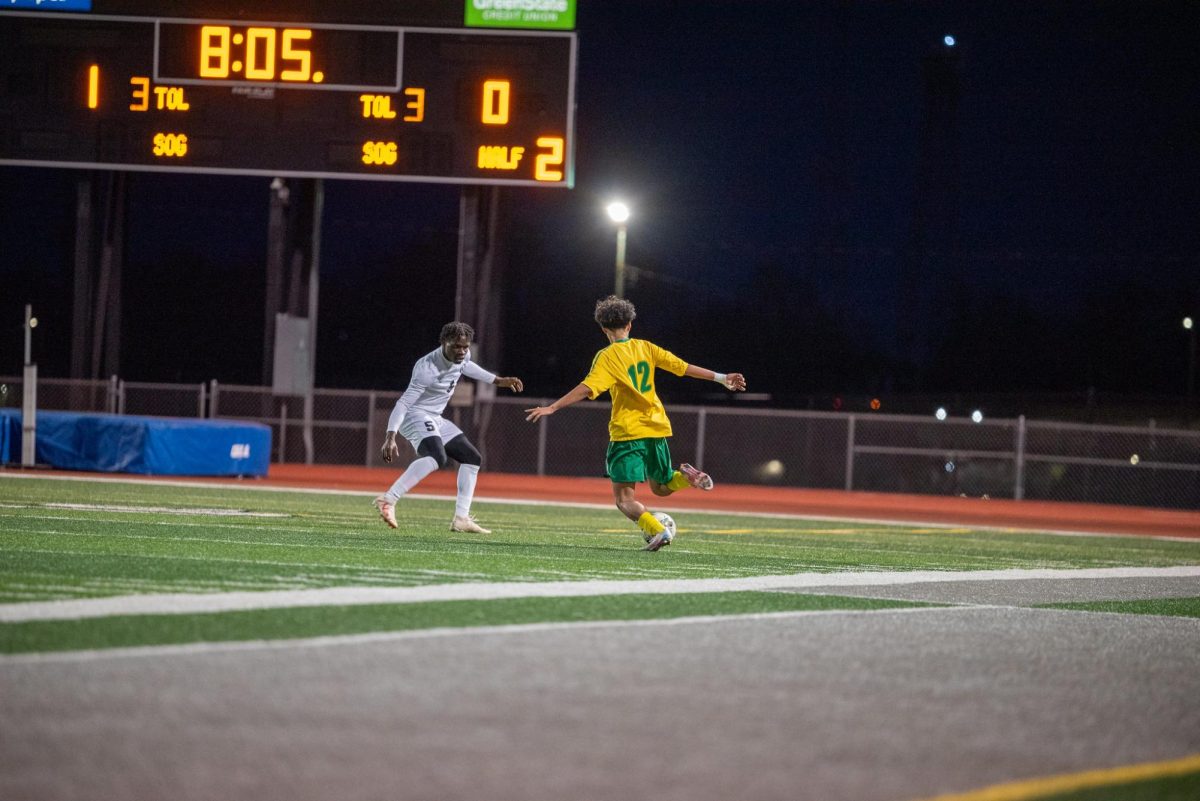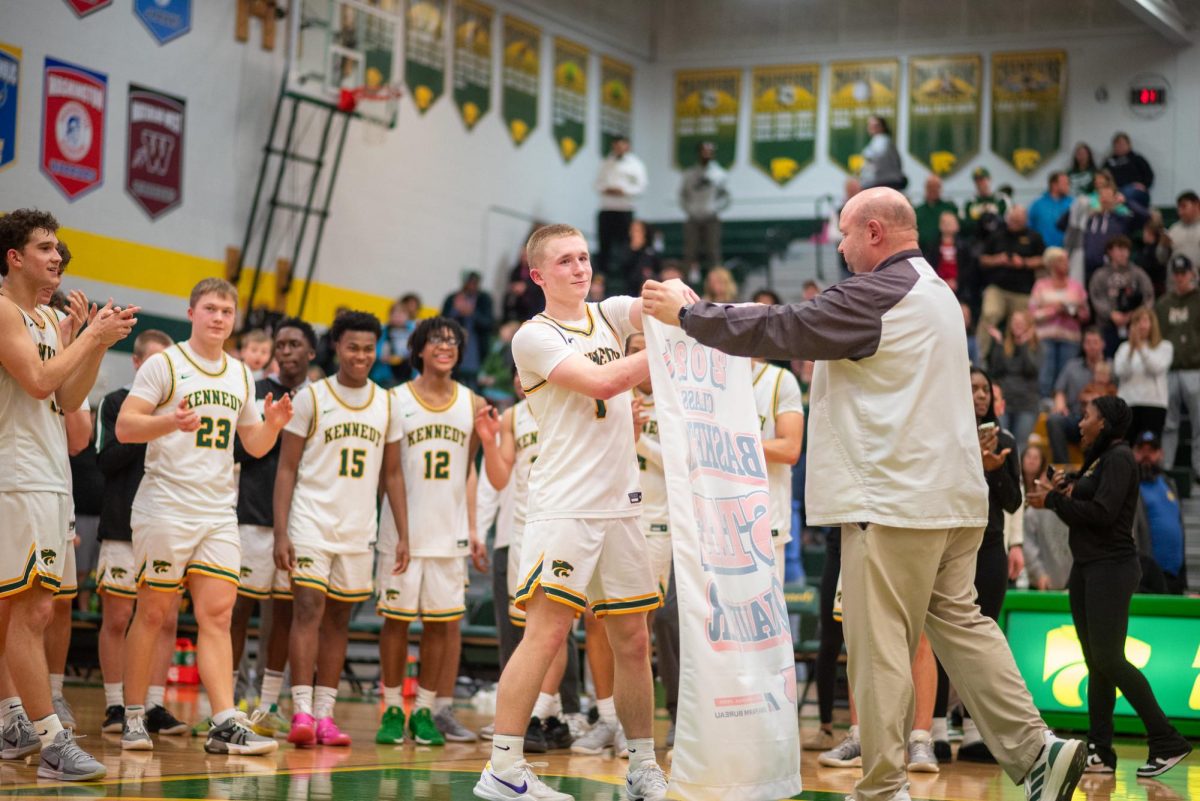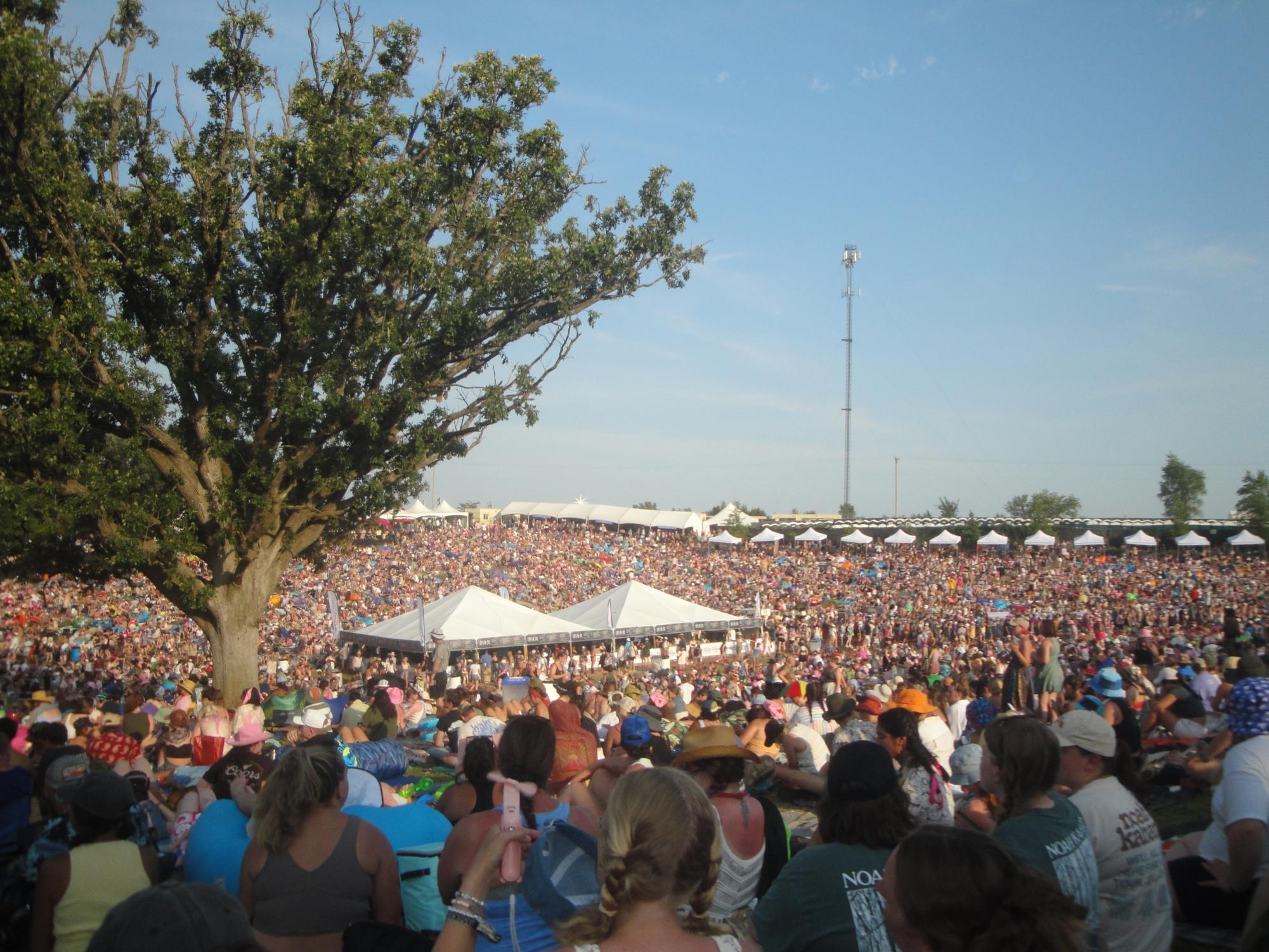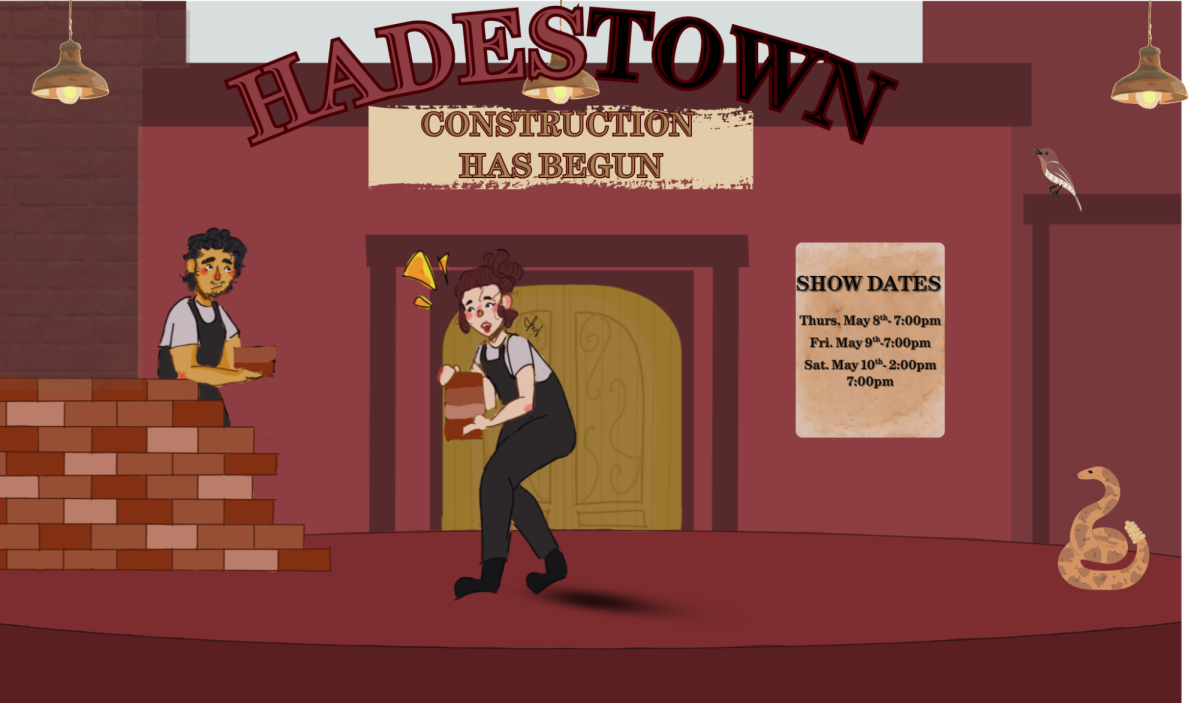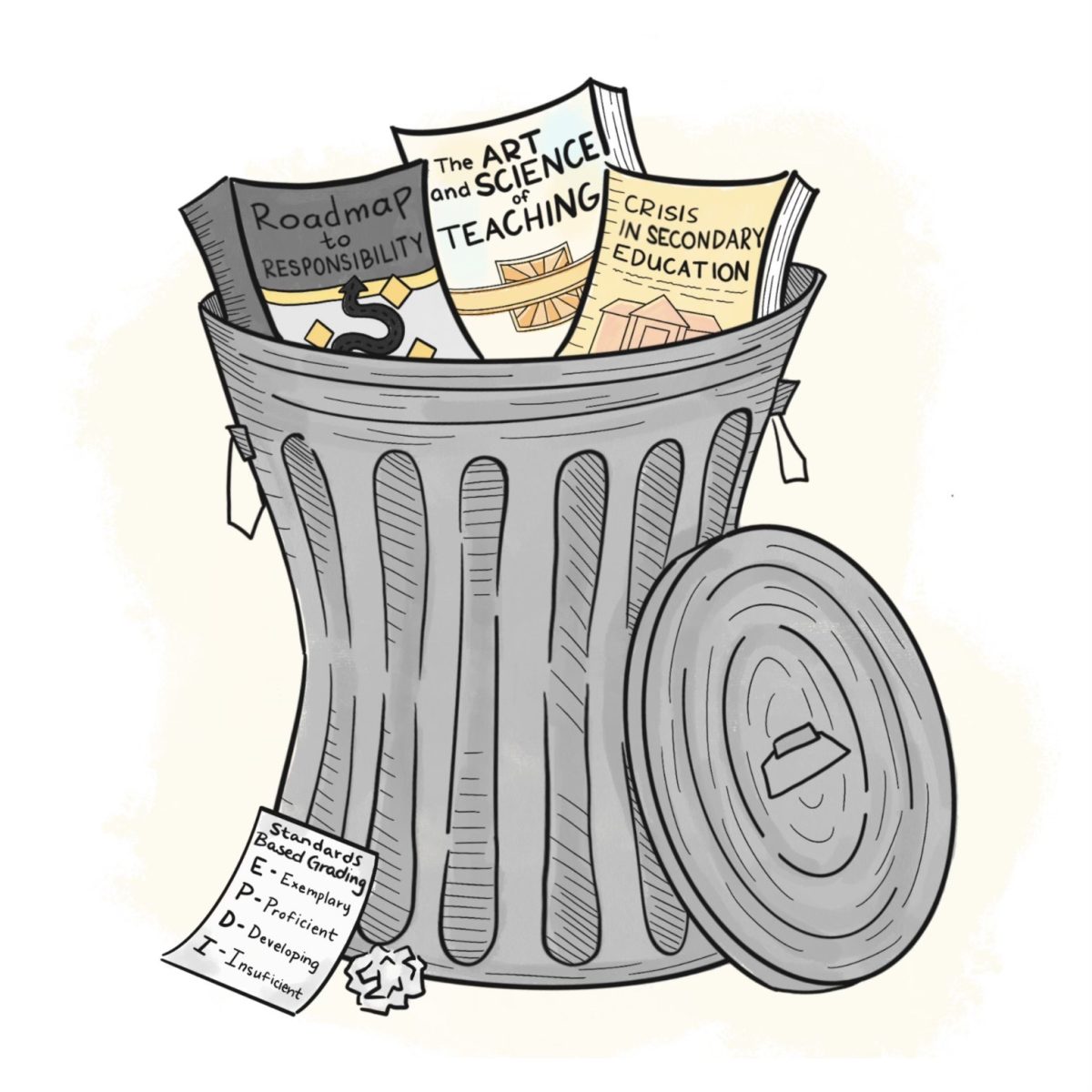The Hinterland Music Festival, held in St. Charles, Iowa, over the weekend of Aug. 2-4, 2024, was an undeniable disaster. With medical emergencies left and right, one wonders, was the star-studded line-up a large enough draw to lure in out-of-staters unprepared for Iowa heat, or was the venue dangerously oversold?
Iowa’s biggest music festival, Hinterland, is held about 30 miles south of the state’s capital at the Avenue of the Saints Amphitheater. The three-day-long event is small, especially when measured against other concerts in the midwest like Chicago’s four-day festival “Lollapalooza,” held on the same weekend in 2024.
Lollapalooza saw 115,000 occupants per day with a record-breaking total attendance of 460,000 patrons in 2024. Hinterland’s venue, by contrast, is only intended to hold 15,000 people, 18,000 at max capacity—although this did not stop higher-ups from allegedly selling over 21,000 tickets.
“We were walking from the campgrounds after the first couple of sets and the line to get through security and into the festival was already about half a mile long,” Iowa native and festival-goer Bri Leonard said. “There was a festival volunteer desperately trying to corral the massive line into three different, unmarked lines.”
The crowds caused mass disorganization as the flood of patrons overtook the festival grounds and merged into something resembling a mob. Staff became overwhelmed almost immediately and all structure within the lines of festival-goers fell apart.
“[He was] telling people that the left line was moving faster,” Leonard said. “To his credit, the left line was moving faster, but only because we unfortunately found out that it was being rerouted through a forested area and into another longer line on the opposite side of the festival. It was a feeling of deception beyond words, everyone that had been tricked into going into that line.”
With havoc beginning before spectators entered festival grounds on the first day, the festival was off to a foreboding start. Patrons were left waiting in line for up to three hours and were stranded without a way to hydrate, having abandoned their waters at camp in compliance with festival rules.
“For reference, we waited in line for about an hour and a half with no water because Friday had the enforced ‘no outside drinks’ rule,” Leonard said.
The crowds were bordering on dangerous by the first day—a venue crammed with more people than it could hold and heat like no one had anticipated spelled disaster from the get-go with staff underprepared for the number of festival-goers.
“This venue always has been and always will be smaller and underdeveloped, making it a complete safety hazard to have it filled wall to wall with people,” Leonard said. “It made it difficult for medical staff to reach individuals who were suffering from heat-related illnesses.”
Heat was a large factor in Hinterland’s issues. Every day was 95 degrees with little to no cloud cover and no breeze in sight. The humidity of an Iowan summer combined with the packed crowd made the heat all the more severe.
“It was very crowded, which was expected given the lineup,” Iowan Anabel Bradley said. “But it did make it hard to get around at times and to find space in the shade when it was broiling outside.”
Artists were stopping and starting sets like it was bumper-to-bumper traffic in New York City. Indie rock band Hippo Campus restarted the same song three times after pointing out different people passing out in the shoulder-to-shoulder pit a few hours into the day.
“A lot of the issues came from festival goers being unprepared for the heat and crowds,” 20-year-old Oregon native Zowie Lee said. “The lineup of this festival blew up on social media and led to a big influx of new festival goers, myself included. My friend and I did a lot of research before coming and made sure we had everything we would need to stay comfortable.”
With intense heat comes a certain amount of personal responsibility. It is on the individual to know their limits and not attempt to stick it out in the pit if they are, for example, an out-of-stater not used to 100-degree weather and intense humidity.
“I think a lot of people expected everything to be provided for them,” Lee said. “In terms of medical and heat issues, I also think that the responsibility lies on the attendee and not the venue. I myself knew I could not physically handle a full day in the pit with straight sun, high 90s for the temperature and little access to water or food just for fear of losing my spot.”
Midwestern weather is notorious for its variability, with warm spring weather, tornadoes and blizzards all likely to happen within a week. Iowa summers have always been hot, but the cloying, oppressive heat of a humid summer day in early August is foreign to most who experience a drier heat and more cloud cover. East and West Coast visitors who did not properly anticipate the weather felt the repercussions of their ignorance when standing under the blazing sun.
“Although I would have loved to be closer to some of my favorite artists, I was not willing to sacrifice my comfort or health to do so, and many others did not have the same common sense,” Lee said.
The Avenue of the Saints Amphitheater has always been small and so has its surrounding campsites. With limited room for expansion, owners pushed the campgrounds out further from the venue to create sections that increased in price as they neared the festival grounds.
“The main issue with the campgrounds being so far away was that it would take you an hour of waiting in line again to get back into the festival, at which point you were better off just not leaving at all the entire day,” Leonard said. “This caused a multitude of problems for a lot of people who relied on being able to go back to their campsite to rest.”
Not only were people staying directly in the campground experiencing issues with entering and exiting the festival due to distance, but Hinterland shuttle services to and from Des Moines and surrounding cities were dismal, with stuffy buses packed to the brim and hours of wait time before one could even board.
“If there was something worse or more panic-inducing than a single firework going off in the campgrounds on Sunday night, it could have caused a stampede that would have injured people,” Leonard said.
On top of that, issues like a lack of shade in the wide-open amphitheater and only one section of restrooms for general admission visitors made the thick crowds all the more unbearable. On the first day, one of the only two water stations intended to hydrate a reported 21,000 people ran out of water.
“As a previous festival attendee, it was frustrating to witness the multitude of issues that could have been prevented by those in charge of the event,” Leonard said. “In complete honesty, the hot weather was the least of Hinterland’s problems.”
Some of these problems were rectified, or at least fixed to the best of the staff’s ability. Outside drink was allowed in after the first day due to the high number of heat stroke victims and shade tents were erected on the last day of the event.
“It was difficult to see any of the staff or volunteers through the massive crowds,” Leonard said. “From what I heard though, they were doing everything they could to keep things running. The medical staff were hustling to help as many people as they could, even when the medical tent was overflowing. The parking attendants were out in the lots for hours without breaks to help keep things organized during the day.”
With just one medical tent and a crowd so tightly packed it would be difficult to squeeze through, volunteers pushed to ensure the safety of festival-goers, handing out canned water and vendors offering bags of ice to those who could not trek to the medical tent.
“I think with festivals that have a bloated attendance level like this one, the staff and volunteers are in pure survival mode, which I have the highest respect for since they can’t control the circumstances that were handed to them,” Leonard said. “It’s unfair to place any blame or criticism on them, considering they were being exposed to the same—if not worse—conditions as the attendees.”
The festival began in 2015 as a two-day experience. When the festival was moved to St. Charles that year due to, ironically, unpredictable weather and flooding, it proceeded to draw an unprecedented crowd of 14,000 over two days. Since then, the festival has only grown.
“With the lineup featuring so many major artists, I definitely think that skyrocketed the number of attendees and caused some overcrowding,” Lee said. “The lineup blew up on social media bringing in a whole new crowd and not just the yearly festival goers. One of the biggest, but unexpected draws was Chappell Roan and with her sudden boom of popularity I think she drew in more guests than some of the headliners.”
While tickets became hot commodities, with three-day passes reselling for upwards of $800 from their original price of $250, it’s difficult to pin the festival’s crowds just on the lineup of popular artists.
“Hinterland 2024 was a completely star-studded line-up from the beginning, and everyone knew it,” Leonard said. “I do think it contributed to the massive crowds that we saw, but people weren’t just showing up out of nowhere looking to buy tickets at the door. Hinterland oversold the venue and continued to oversell it as the event got closer.”
Despite the inherent greed in the overcrowding and underplanning of the festival, spectators made the most of the experience by lending each other helping hands and supporting fellow patrons as best they could.
“When waiting in line, those around you offered glitter and other things to accessorize or games,” Bradley said. “It’s incredible how even with pretty miserable weather conditions everyone was still so wonderful and bonded over their hatred of the heat and a love for live music.”
Serial Hinterland-goers emphasize how the festival is different because of the people. A small Midwestern indie music festival, intent on lifting up small artists, would not be complete without the spectators to match.
“Hinterland, for the most part, was an unfortunate mix of disappointing and infuriating moments made less bitter by the pure kindness of strangers,” Leonard said. “Hinterland will always hold a special place in my heart for the music and the people. By far the best part of Hinterland always has been and always will be the people you go with and the people you meet along the way.”

